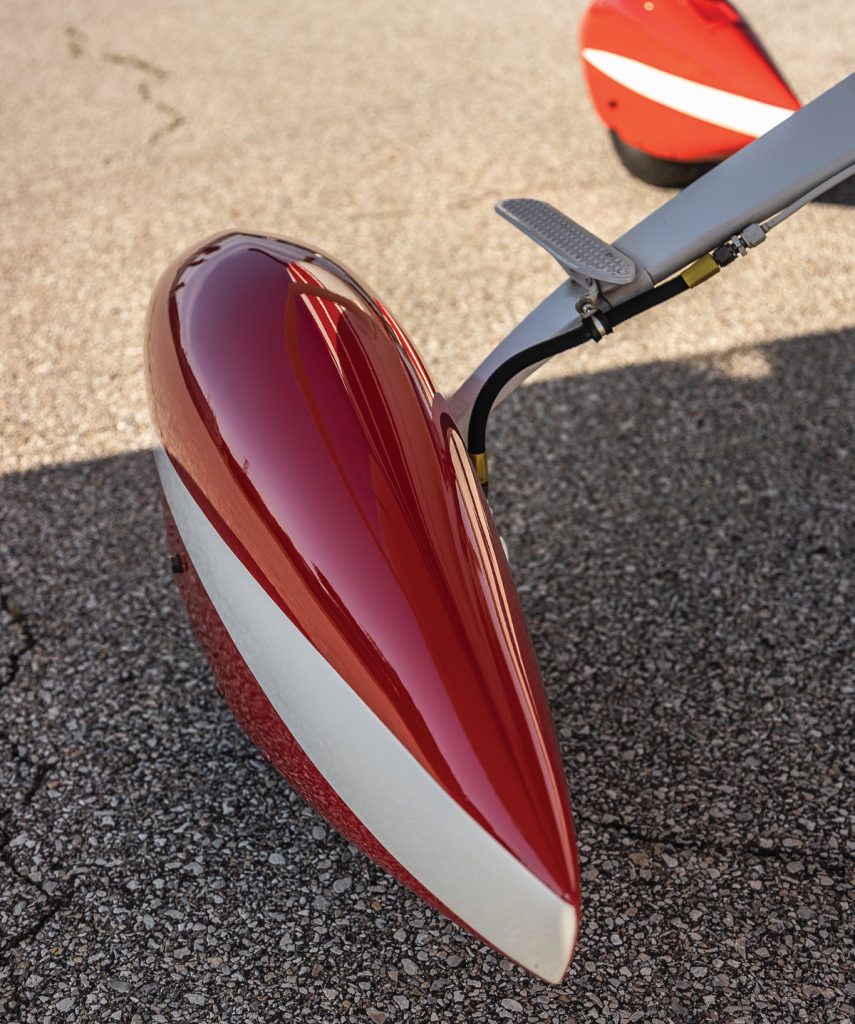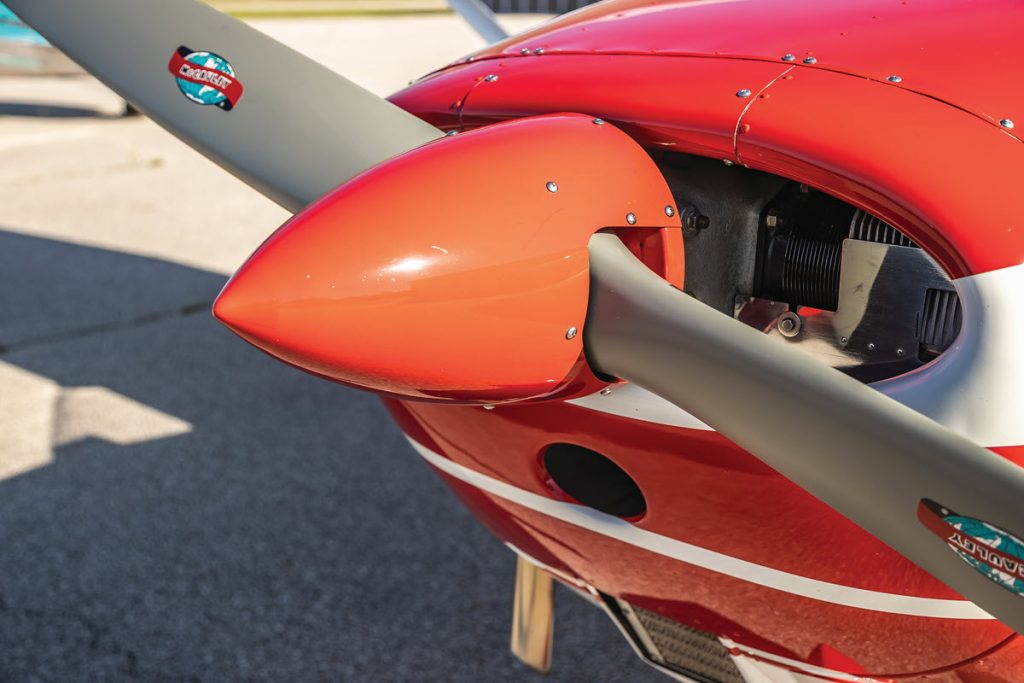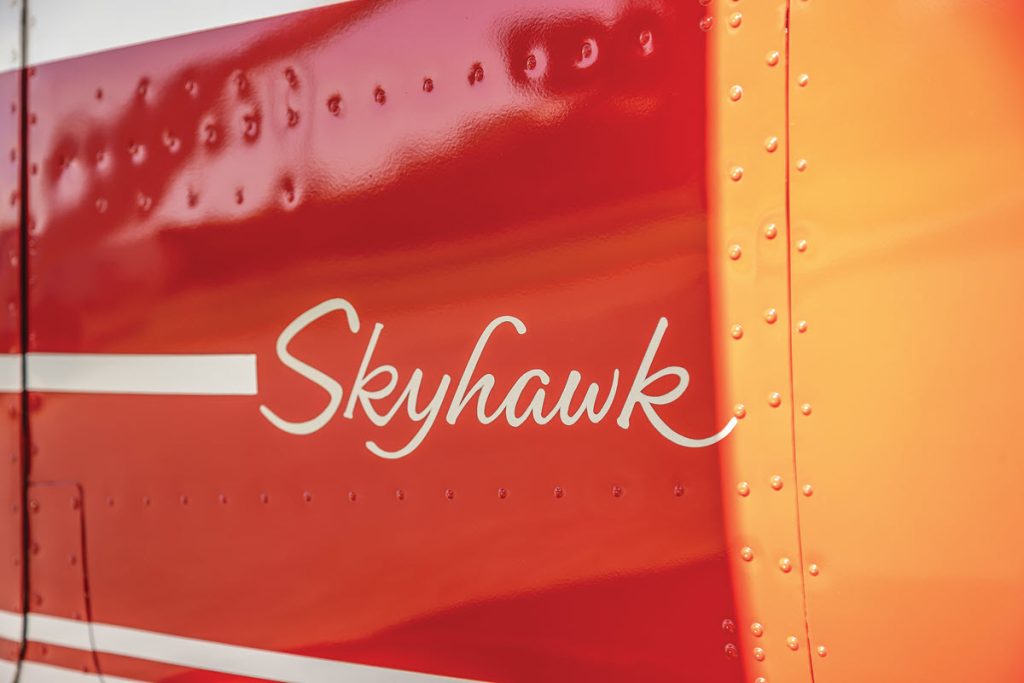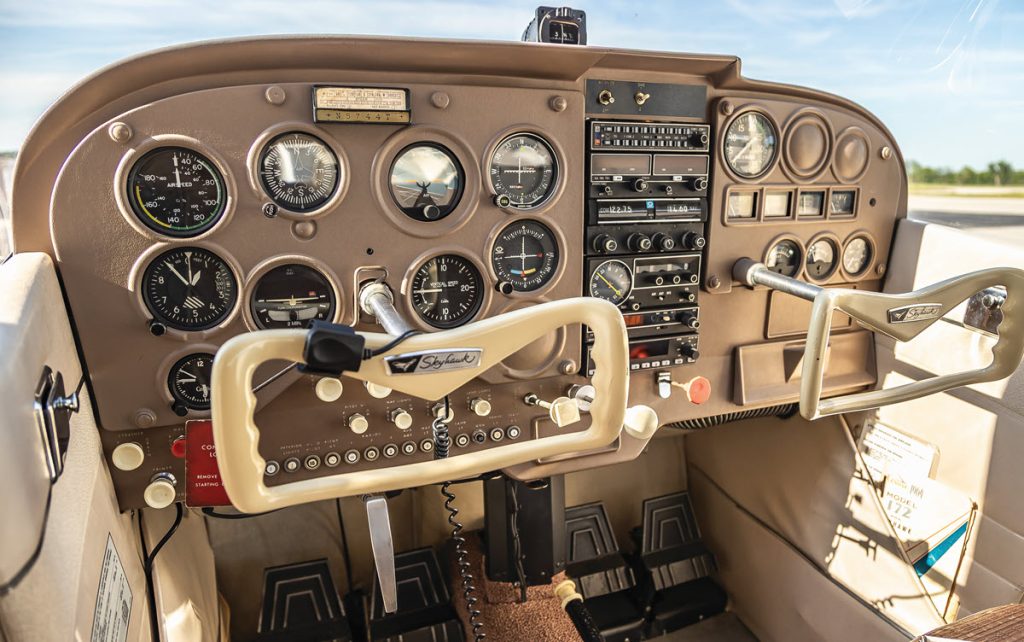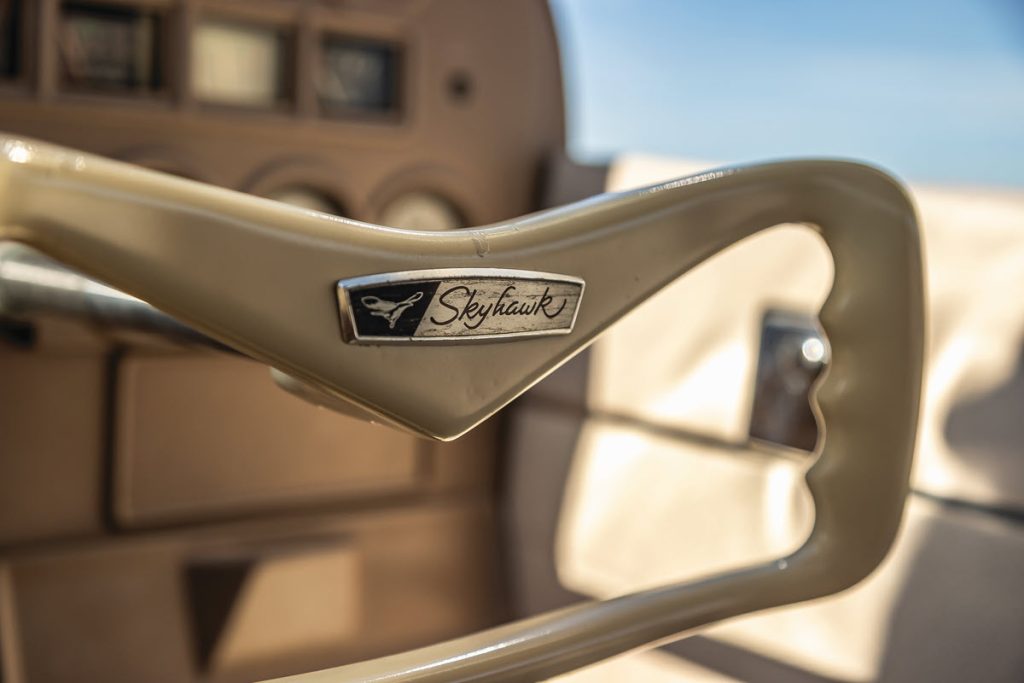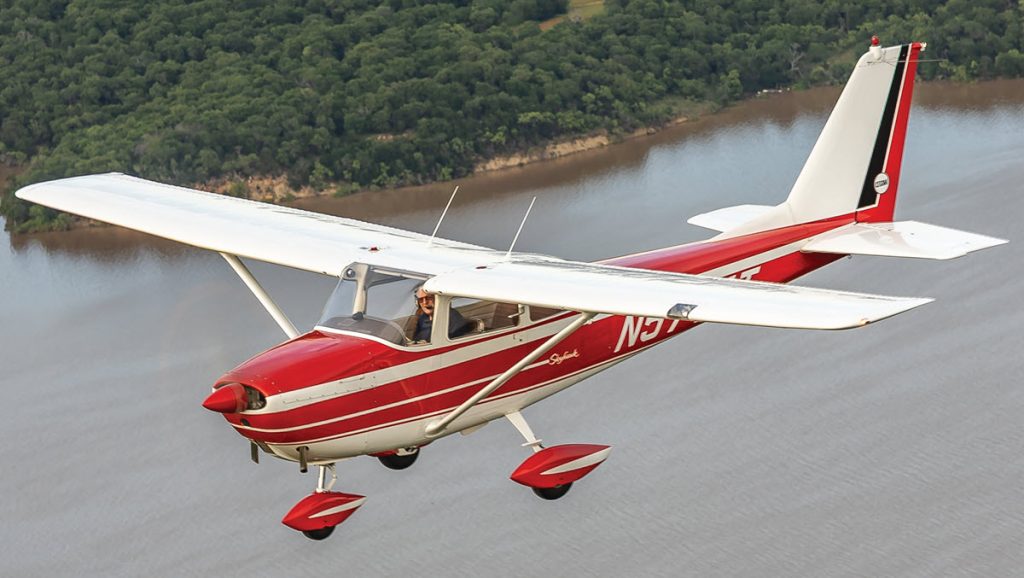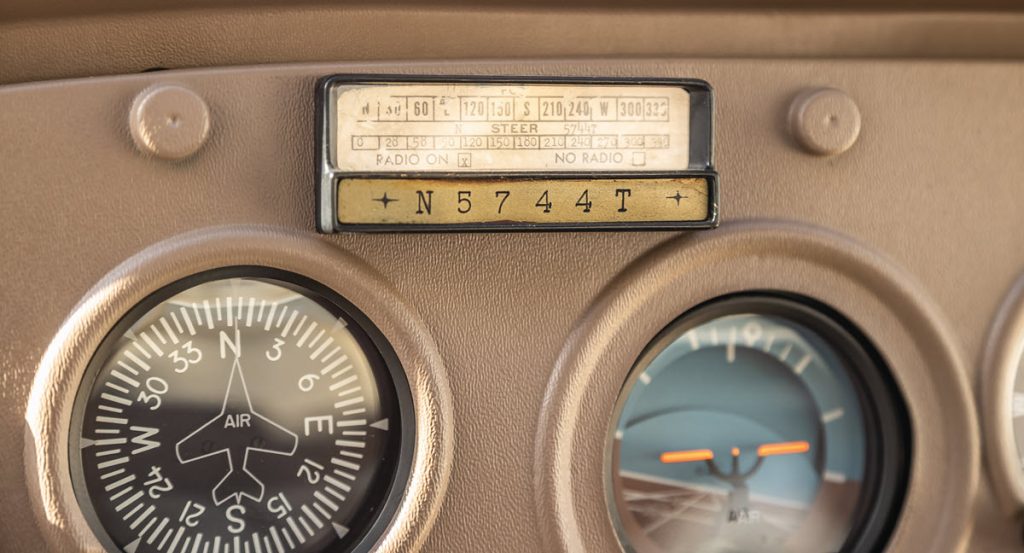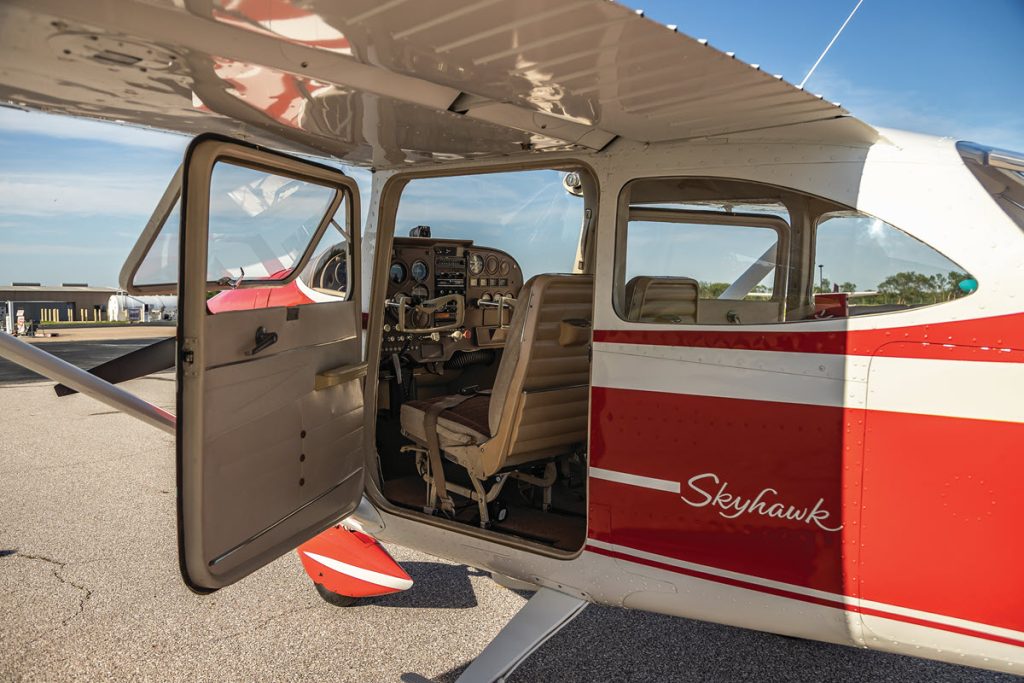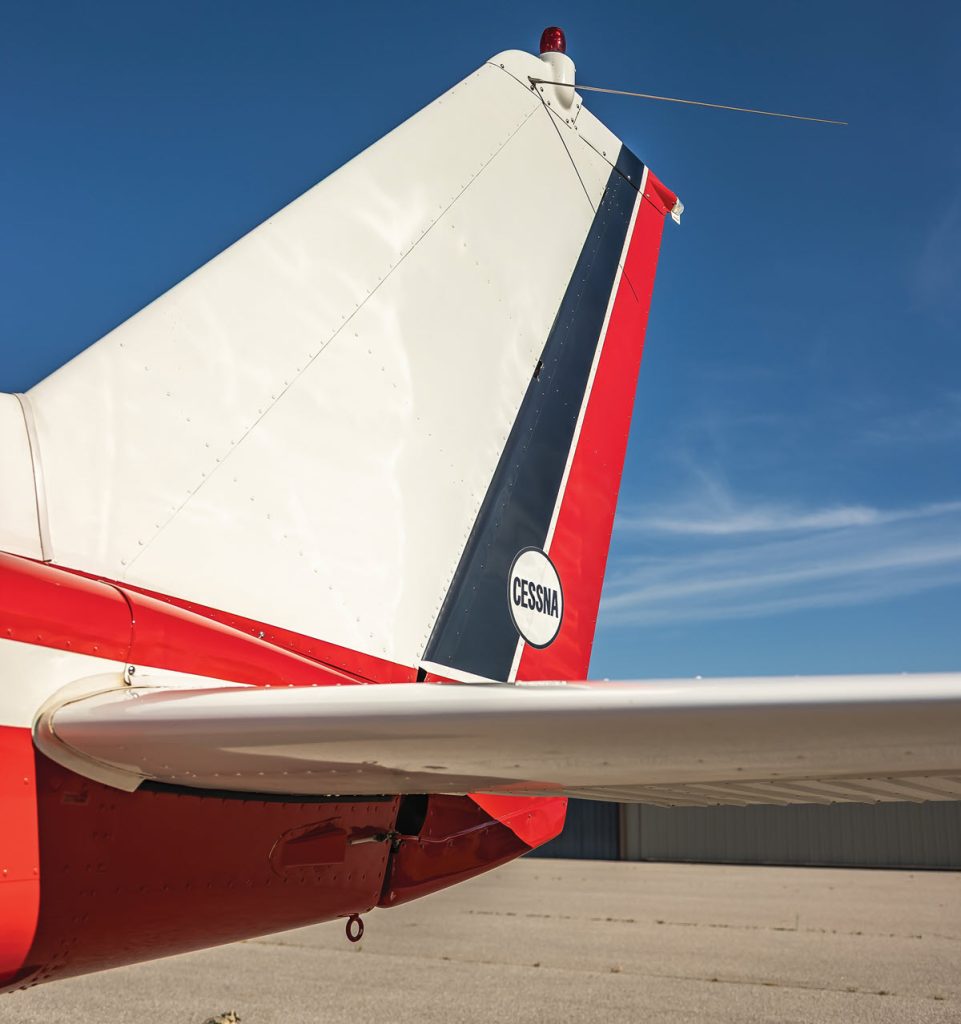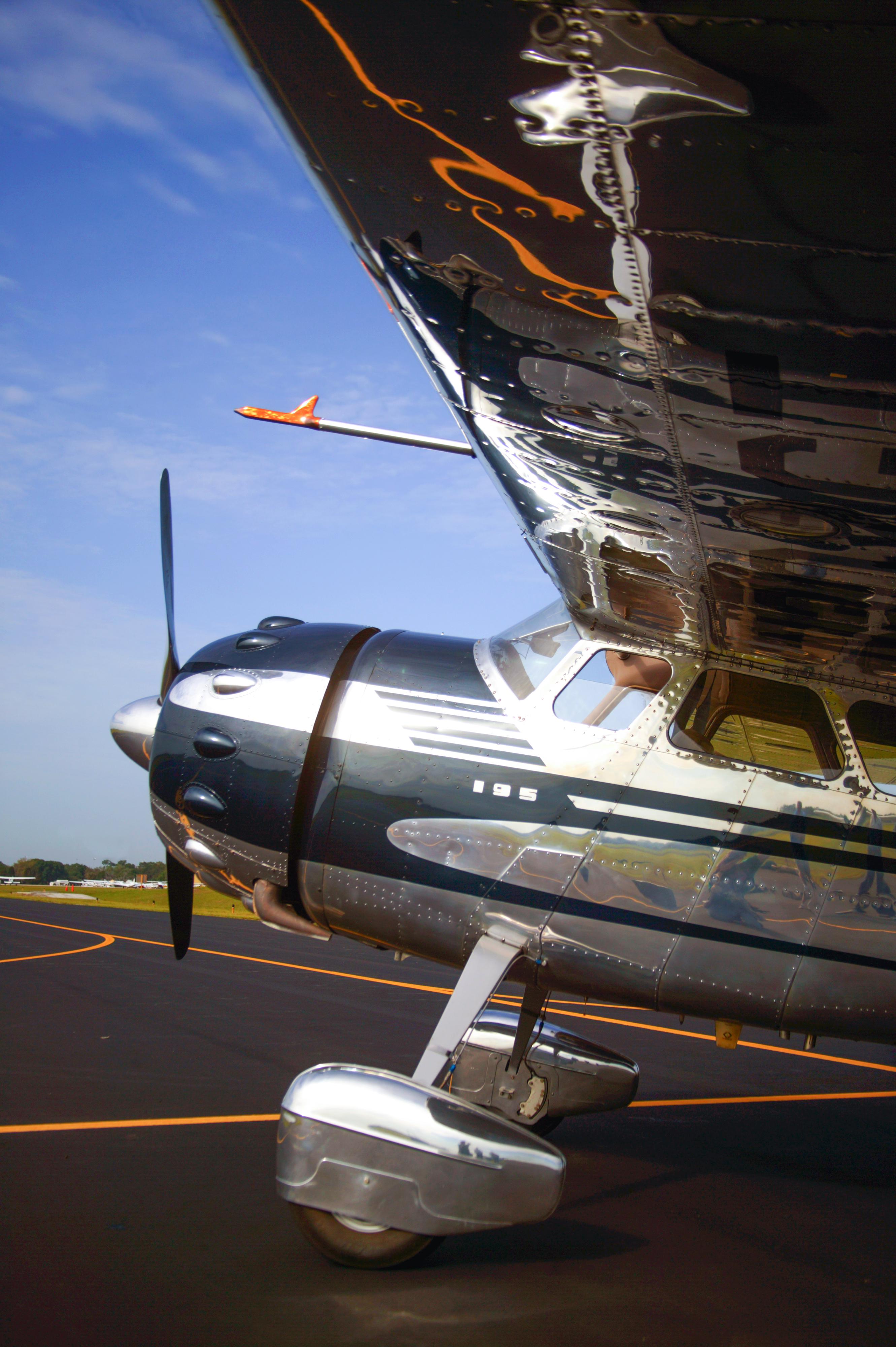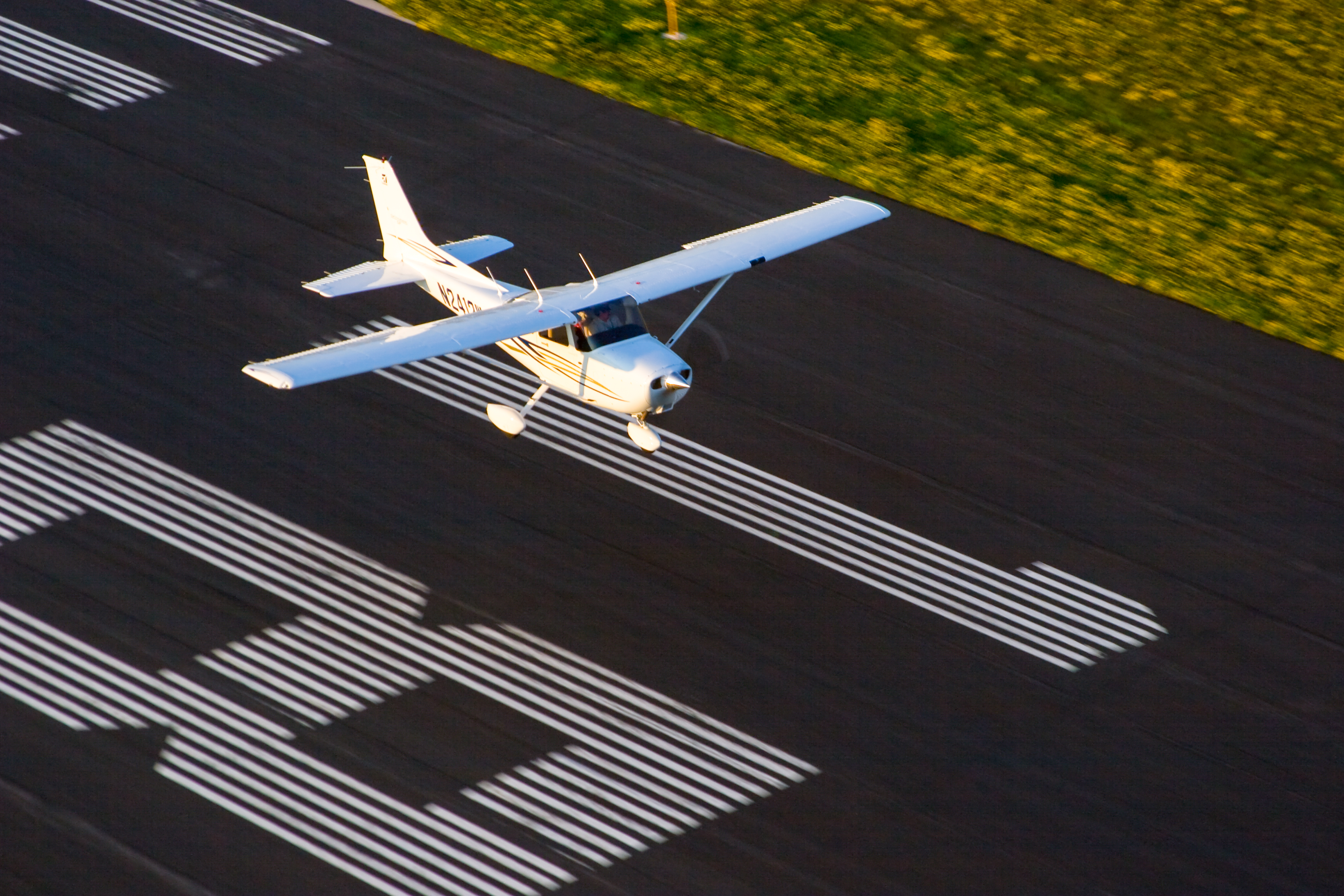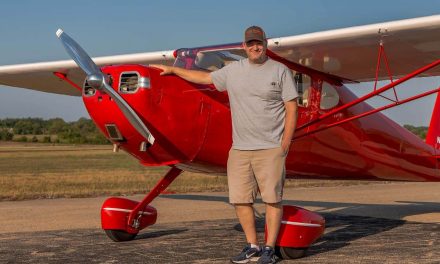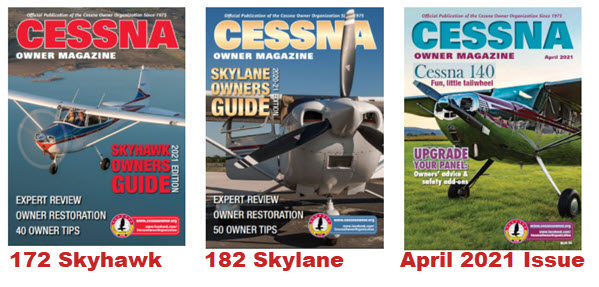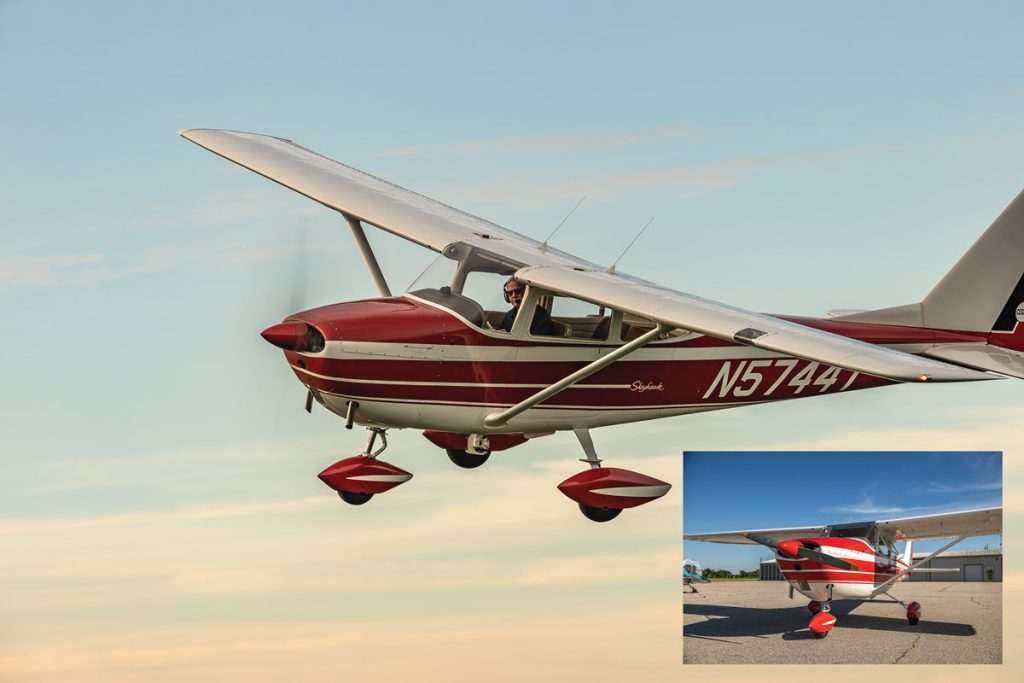
By Michelle Adserias
For many aviators, it was love at first flight. Rusty Morris is one of those pilots who was enamored with flying from his first taste of taking to the skies. Rusty spent his childhood in Kansas City, Kansas. It was during these formative years, in 1955, that his uncle took him for a ride in his Aeronca Champ.
Rusty decided to pursue his PPC when he got a little older, taking his first lesson in March 1964. He managed to get two years of flight training in before serving as an MP (military policeman) in the Army from 1966 to 1969. He wasted no time resuming lessons when he was able and completed his certification in June of 1969 at Kansas City Municipal Airport (also known as Charles B. Wheeler Downtown Airport – KMKC).
The first airplane Rusty owned was a Cessna 120. Although he was happy enough with this aircraft, he jumped at the opportunity to upgrade to something a little bigger, a little better, and considerably newer. An older gentleman at the airport where Rusty stored his 120 was upgrading to a 1975 Cessna 182. He offered to sell Rusty his 1964 Cessna 172E. At the time, it had only seen 584 hours of flight time. Rusty purchased his Skyhawk on May 1, 1975, and has been flying it ever since.
True Devotion
It isn’t common for an aircraft to stay in one person’s possession for 50 years, a testament to how happy Rusty was, and is, with his 172. Of course, it’s hard not to appreciate a plane that offers so much. There’s always the ongoing maintenance to keep up with but other than that, N5744T has been problem-free.
The engine had to be overhauled at one point, and the body needed a new paint job. An avionics upgrade was also necessary when Rusty’s son, Mark, decided to pursue not only his private certification but his commercial and instrument ratings as well. The avionics upgrade in the 1990s featured a Bendix King Silver Crown, which, although older, serves Rusty’s purposes very well. He has no current plans to change it out for something more modern.
Most of the key pieces of N5744T are factory original; the windows, interior, headliner, and the side panels, which is fairly unusual. But Rusty doesn’t see any point in replacing good parts. As the saying goes, “if it ain’t broke, don’t fix it.” On the rare occasions he does need to make a repair, he turns to his local Cessna dealers, Aircraft Spruce, or McFarlane for parts.
Part of the Family
Over the years, Rusty’s Cessna 172 has become a key member of the family — one of great sentimental value. This airplane is now being used by the third generation of Morris pilots. Rusty’s granddaughter, Alyssa, recently flew it for the first time. Rusty was there to support her, but Alyssa did all the work. His grandson, Blake, will also be ready to start flying soon.
It’s fitting that one of Rusty’s most memorable moments was a family flight with his wife and two children. They were making the journey from Kansas City, Kansas, to Houston, Texas, and arrived at William P. Hobby Airport (KHOU) during rush hour at 5:00 p.m. Rusty had never encountered such heavy air traffic!
Perhaps that’s why he prefers quieter destinations. The Skyhawk has become Rusty’s hamburger-getter. At least once a week, sometimes more, he and his flying buddies from the Fort Worth, Texas, area make burger runs to small towns in northern Texas; Graham Municipal Airport (KRPH), Gainesville Municipal Airport (KGLE), Granbury Regional Airport (KGDJ), or Stephensville Clark Regional Airport (KSEP).
One of their favorite places to frequent is Cedar Mills Airport (3T0), a grass airstrip near Denison, Texas. From the landing strip, it’s just a ten-minute walk to Pelican’s Landing, a waterfront restaurant on the shores of Lake Texoma.
Rusty flies about 50-60 hours each year for the sheer pleasure of it. How much does it cost? He has no idea. It wouldn’t matter to him anyway. He has no plans to give up the pilot seat of his highly treasured Skyhawk or the thrill of flight.
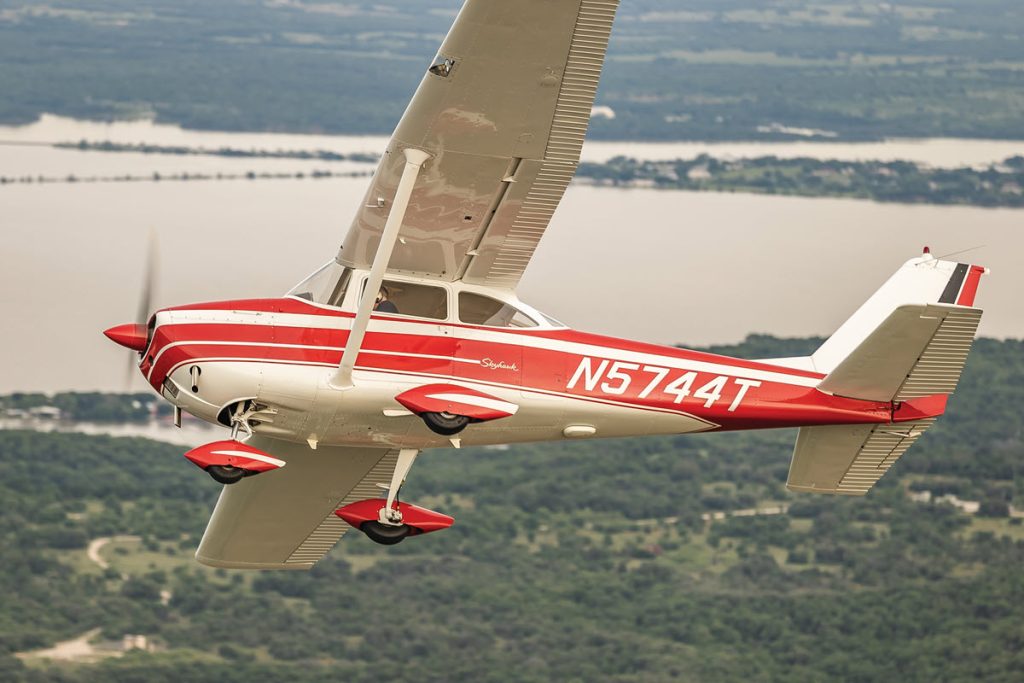
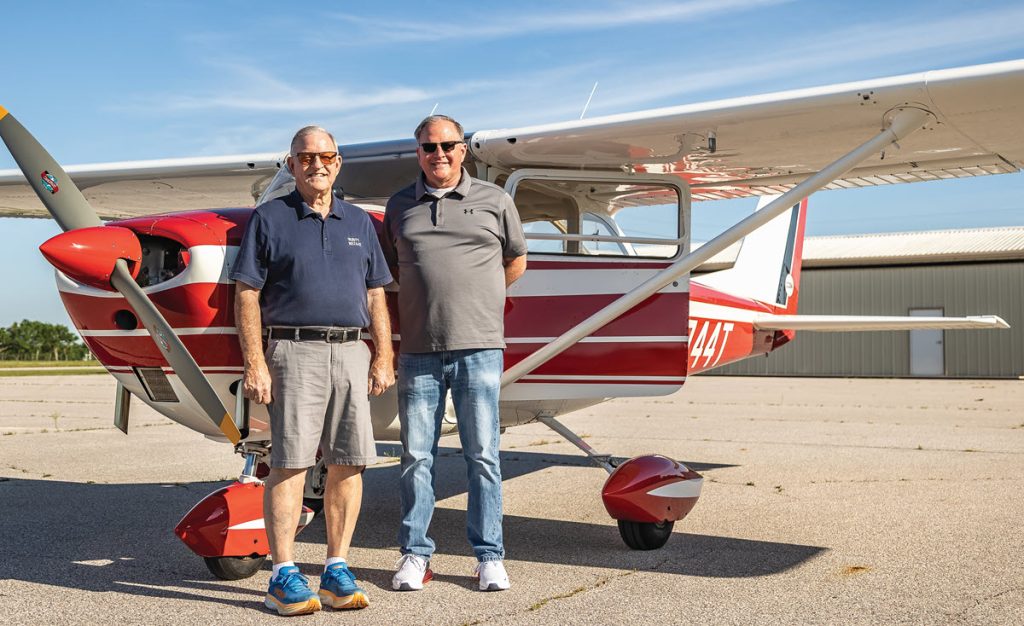
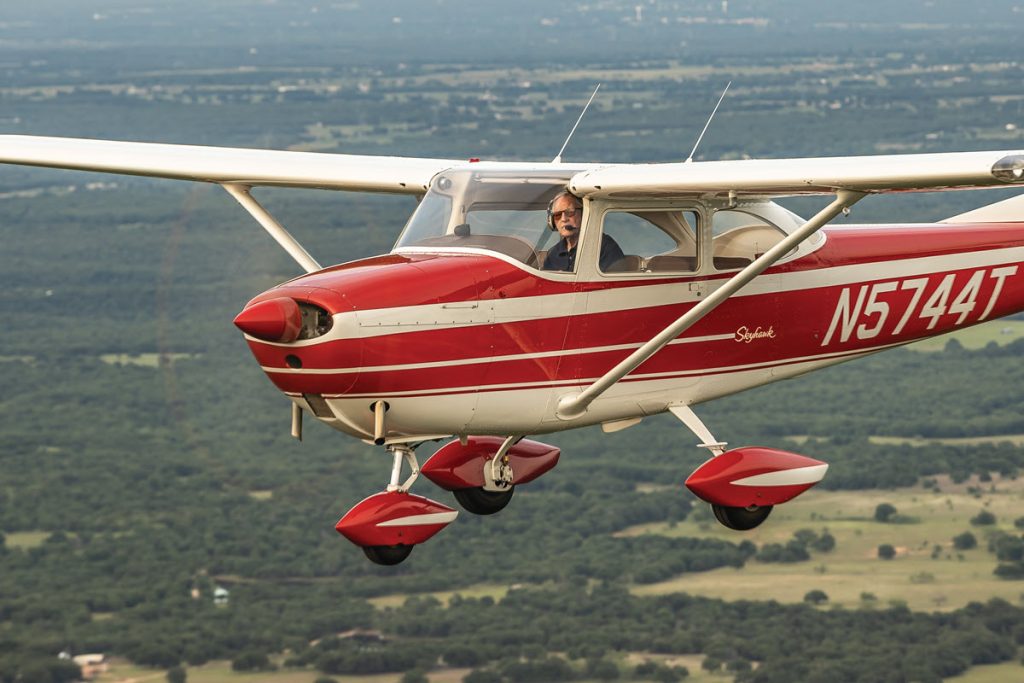
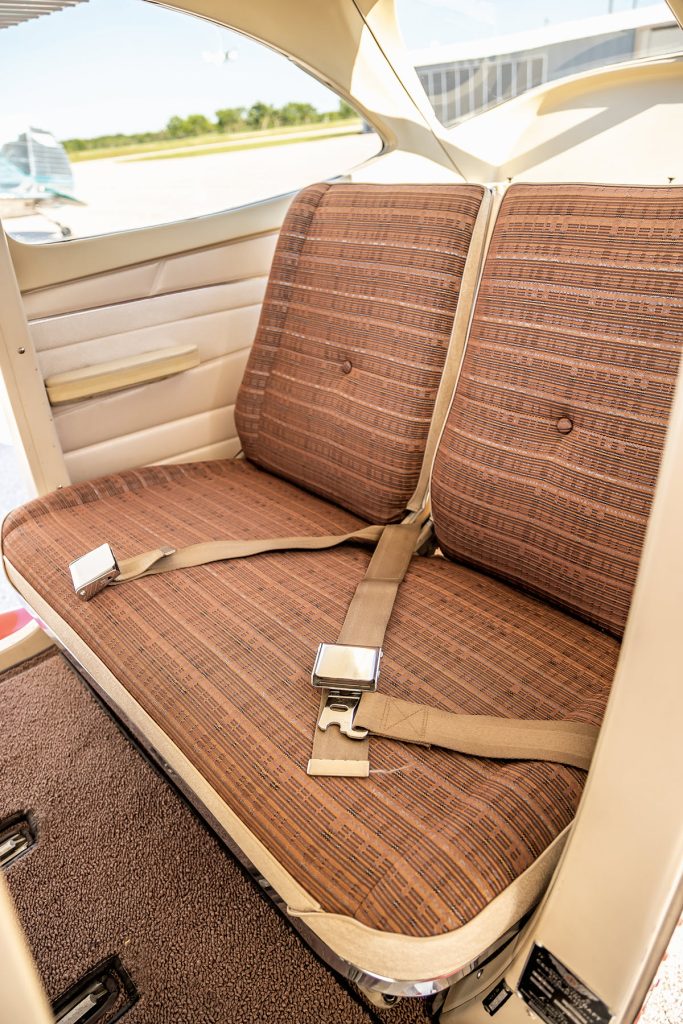
THE CESSNA 172
The very first Cessna 172 was fashioned after a Cessna 170. However, when the first one was produced in 1956, there were a few key differences.
The Cessna 172 had a newly-configured tricycle landing gear the marketing department dubbed “The Land-O-Matic.” It did, in fact, make landing the aircraft easier, which quickly made it a popular airplane among pilots, particularly those looking for a good training airplane.
But that wasn’t the only difference. The tail also took on a new design and look. The rounded tail of the Cessna 170 gave way to a new swept tail design with straighter, sharper angles in 1960. Then, in 1961, a new cowl design was introduced, giving the Cessna 172 an even sleeker, cleaner look.
In 1963, modifications were made to the fuselage to accommodate the wraparound “OmniVision” rear windows Cessna had begun installing in some of their other models. Cessna also began installing one-piece windshields in the 172s. These changes greatly improved visibility. In time, even the panel took on the unique look now associated with classic Skyhawks.
The Skyhawk is the most successful general aviation aircraft in history. In its first year of production, Cessna sold over 1,400 of these aircraft at $8,295 each, a truly amazing feat in aviation history. Its simplicity and reliability have made it a favorite with training companies. In fact, over 44,000 of these planes have sold since their inception.
Have a website login already? Log in and start reading now.
Never created a website login before? Find your Customer Number (it’s on your mailing label) and register here.
JOIN HERE
Still have questions? Contact us here.

